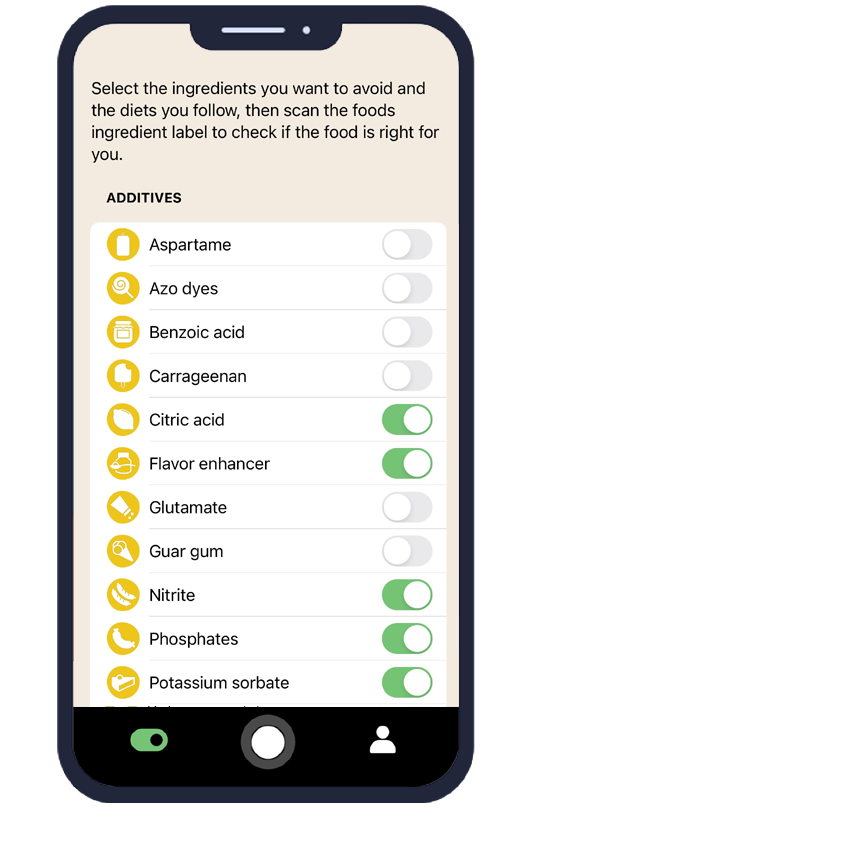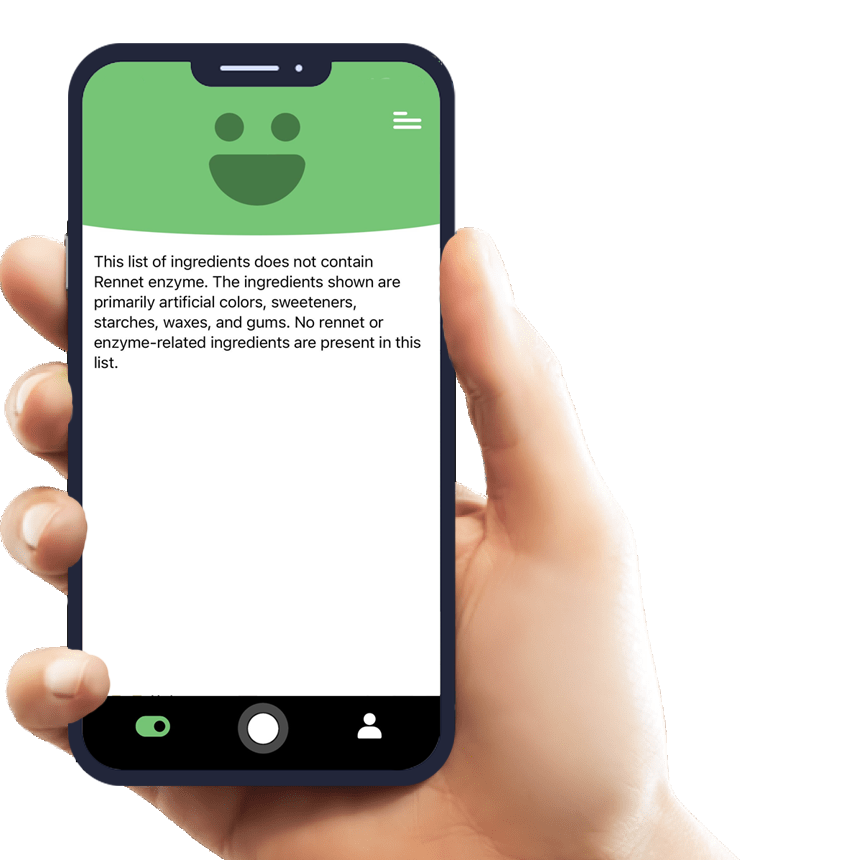Everything You Need to Know About Lupin and How AI Eat This Can Help
Lupin is a legume-based ingredient that's increasingly found in processed foods, but many consumers aren't aware of its presence or potential health implications. For people with specific allergies or dietary restrictions, identifying Lupin in food products can be challenging and time-consuming. The AI Eat This mobile app revolutionizes this process by instantly scanning ingredient lists and helping users avoid unwanted additives like Lupin with just a simple camera scan.
Whether you're managing a Lupin allergy, following specific dietary guidelines, or simply want to make more informed food choices, understanding this ingredient and having the right tools to identify it is essential for maintaining your health and peace of mind.
What Is Lupin and Where Is It Used?
Lupin refers to seeds from the lupin plant, a legume in the same family as peanuts, soybeans, and peas. Food manufacturers commonly use Lupin flour as a protein-rich ingredient in various processed foods. It serves as both a nutritional enhancer and a functional food additive, providing texture and extending shelf life in many products.
This versatile ingredient appears in numerous food categories, often without consumers realizing it. Lupin can be found in bread, pasta, pastries, and meat substitutes where it acts as a binding agent and protein booster.
Common Foods Containing Lupin
Understanding where Lupin typically appears helps consumers make informed choices about their food purchases:
- Gluten-free bread and baked goods
- High-protein pasta and noodles
- Vegetarian and vegan meat alternatives
- Protein bars and nutritional supplements
- Some breakfast cereals and snack foods
- Certain dairy alternatives and plant-based products
Is Lupin Safe? What Does the Research Say?
For most people, Lupin is considered safe for consumption and is approved by major health authorities. The U.S. Food and Drug Administration (FDA) recognizes Lupin as a safe food ingredient when properly labeled. Similarly, the European Food Safety Authority (EFSA) has established guidelines for its use in food products.
The World Health Organization acknowledges Lupin as a nutritious legume that can contribute to a balanced diet. However, safety considerations vary significantly depending on individual health conditions and allergic sensitivities.
Regulatory Approvals and Guidelines
Health authorities worldwide have established clear labeling requirements for Lupin-containing products. In many countries, including the United States and European Union, Lupin must be clearly identified on ingredient lists due to its allergenic potential. These regulations ensure that consumers with dietary restrictions can make informed choices about their food purchases.
Lupin Allergy and Intolerance Risks
While generally safe, Lupin poses significant risks for certain individuals. People with legume allergies, particularly those allergic to peanuts, may experience cross-reactivity with Lupin. Symptoms can range from mild digestive discomfort to severe allergic reactions requiring immediate medical attention.
Those with existing food allergies or intolerances should consult healthcare providers before consuming Lupin-containing products. Proper identification and avoidance become crucial for maintaining health and preventing adverse reactions.
How AI Eat This Helps You Avoid Lupin
The AI Eat This app transforms how consumers identify and avoid unwanted ingredients like Lupin. Using advanced artificial intelligence technology, the app instantly scans ingredient lists through your smartphone camera, regardless of the language on the packaging. This feature proves invaluable for travelers or those shopping for international products.
Users can set personalized dietary filters that automatically flag Lupin-containing products. The app's intelligent system recognizes various names and forms of Lupin, including technical terms and alternative designations that might appear on ingredient labels.
Beyond simple identification, AI Eat This provides educational information about flagged ingredients, helping users understand why certain additives might not align with their dietary restrictions. This comprehensive approach empowers consumers to make confident food choices while shopping.
Who Should Avoid Lupin?
Several groups should exercise caution or completely avoid Lupin-containing products. Individuals with diagnosed Lupin allergies must strictly avoid this ingredient to prevent potentially dangerous allergic reactions. People with broader legume allergies should also be cautious due to possible cross-reactivity.
Those following specific dietary protocols, such as certain elimination diets or medical nutrition therapy, may need to avoid Lupin based on their healthcare provider's recommendations. Additionally, some people choose to avoid Lupin for personal dietary preferences or philosophical reasons related to food processing.
Parents of children with food allergies should be particularly vigilant, as Lupin allergies can develop at any age and may not be immediately apparent during initial exposures.
Tips for Maintaining a Lupin-Free Diet
Successfully avoiding Lupin requires a combination of knowledge, vigilance, and practical strategies. Always read ingredient labels carefully, paying attention to both obvious and technical names for Lupin-derived ingredients.
Focus on whole, unprocessed foods when possible, as these naturally contain fewer additives and processed ingredients. When purchasing packaged foods, choose products from manufacturers known for clear labeling practices and allergen awareness.
Consider these practical approaches for Lupin avoidance:
- Use the AI Eat This app for quick ingredient scanning
- Contact manufacturers directly when ingredient information is unclear
- Shop at stores with knowledgeable staff who can assist with product selection
- Prepare more meals at home using known, safe ingredients
- Keep a list of trusted, Lupin-free brands for convenient shopping
The Future of Food Safety and Ingredient Awareness
Technology continues to revolutionize how consumers navigate dietary restrictions and food safety concerns. Apps like AI Eat This represent the cutting edge of personalized nutrition technology, making it easier than ever to maintain specific dietary requirements without sacrificing convenience or variety.
As food labeling regulations evolve and consumer awareness increases, tools that simplify ingredient identification become increasingly valuable. The combination of artificial intelligence and smartphone technology puts powerful food safety resources directly in consumers' hands.
Conclusion
Understanding Lupin and its presence in food products is essential for anyone managing food allergies, intolerances, or specific dietary restrictions. While this legume-based ingredient is generally safe for most people, those with sensitivities need reliable methods to identify and avoid it in their food choices.
The AI Eat This app provides an innovative solution for navigating the complex world of food additives and allergens. By combining advanced scanning technology with personalized dietary filters, it empowers users to make confident food choices while maintaining their health and dietary goals.
Take control of your dietary health today. Download AI Eat This for free testing today! and experience how technology can simplify your journey toward safer, more informed food choices.

70 filters
With over 70 filters, you can easily avoid certain ingredients and follow your dietary preference.

Paleo

Pescetarian

Ultra-processed food

Vegan







































































